Comments / Questions (486)
![]() Kim S. wrote:
Kim S. wrote:
I am done with round 16. Do I need to add tr's to the next round for the inc.? Or just crochet round 14 like it says?
07.01.2015 - 05:53DROPS Design answered:
Dear Kim, after round 16 you crochet again from round 14, ie 1 tr in each tr and 1 tr in each ch-loop around (you will get more than the 256 tr given under round 14, they apply to the first time you crochet that round), than work round 15 and round 16 (inc are done automatically following the pattern) - repeat these 3 rounds as explained (nber of sts will change every repetition in height). Happy crocheting!
07.01.2015 - 10:37
![]() Barbara Skillen wrote:
Barbara Skillen wrote:
I have just finished the jacket, without any problems I am pleased to say but one thing I would like to know is, why is the pattern slightly different on the main circle, as it is to the sleeves. Fortunately, both variations of patterns are easy to remember, without checking the pattern but just not sure why the 2 parts of the jacket, have a different pattern to them. Thank you
07.01.2015 - 03:31Debbie Sutherland wrote:
Ready to start sleeves...on the circle side I have the chain 3, skip 2 Dtr then Dtr in the next. On the other side it is Dtr in each Dtr and chain loop. I am to put 60 DTR starting from the circle...I am a little confused can you help?
02.01.2015 - 21:40DROPS Design answered:
Dear Mrs Sutherland, distribute 30 dtr evenly each side of armhole (30 dtr along circle before armhole + 30 dtr in the ch worked for armhole) to get a total of 60 dtr. Happy crocheting!
03.01.2015 - 14:50Debbie Sutherland wrote:
Almost afraid to ask but when it says 2 strands does that mean 1 strand from one ball or 2 strands one strand each from 2 separate balls?
30.12.2014 - 18:58DROPS Design answered:
Dear Mrs Sutherland, you can work either with 2 strands from the same ball or 2 strands each from 2 separate balls as you rather like to work, just remember to work with 2 strands hold as just one. Happy crocheting!
31.12.2014 - 12:43Debbie Sutherland wrote:
Going to begin binding off for sleeves for xl so confused...is there a video?
27.11.2014 - 05:37DROPS Design answered:
Dear Mrs Sutherland, to make armholes in size XL, work circle until round 13, on next round, start with 3 ch, then 34 ch, skip (3 dtr and 2 ch) a total of 8 times (UK-English terminology) (= 1st armhole), work *1 dtr in each of the next 3 dtr, 1 dtr in the next ch-loop*, repeat from *-* a total of 16 times, then shape 2nd armhole as follows: 34 ch, skip over (3 dtr and 2 ch) a total of 8 times (= 2nd armhole), then work *1 dtr in each of the next dtr, 1 dtr in the next ch-loop*, repeat from *-* until end of round - join with 1 sl st in 3rd ch from beg of round. Happy crocheting!
27.11.2014 - 09:39
![]() Shaun Hawkins wrote:
Shaun Hawkins wrote:
I've just finished row 7 and my circle is wavy and doesn't lay flat. I measured after row 6 and it measured correctly. Have I done something wrong?
25.11.2014 - 20:10Shaun Hawkins answered:
Never mind I see that wave look is how the jacket will drape.
25.11.2014 - 23:18
![]() Carmen wrote:
Carmen wrote:
Hi, I haven't started yet, but was wondering if I could use #3 thread for this pattern.
19.11.2014 - 23:39DROPS Design answered:
Dear Carmen, this jacket is worked with 2 threads hold tog, remember to check your tension, you should get 3 rows in the circle measure 2 5/8” and after 5th round circle should measure 8" in diameter. Happy crocheting!
20.11.2014 - 09:59
![]() Marie Jahn wrote:
Marie Jahn wrote:
Thanks Tracy.
05.10.2014 - 06:53
![]() Tracy Murray wrote:
Tracy Murray wrote:
Ok, jacket is finished..almost and I LOVE it!!! One last question before I finish the border. It says to skip 1/2 to 3/4'' in between the tr, ch2, tr. Im gettin wierd measurments..so im thinking to just tr, skip one stitch and treble in the next? Skipping one stitch seems to be the closest I can get to that measurement. Sound about right? THank you for all your help! I will be making a bunch of these for christmas gifts!
04.10.2014 - 05:46DROPS Design answered:
Dear Mrs Murray, you may adjust the border as you rather like - skip 1/2 to 3/4" or less/more as your rather want to get the edge. Happy crocheting and thank you !
04.10.2014 - 17:55
![]() Marie Jahn wrote:
Marie Jahn wrote:
Hi,I love this jacket. I need some help, very confused. I'm starting row 12. Reading ahead I'm using bind off for m/l. Not sure which row 13 to use the one above in the main pattern or the one in the bind off instructions. Please help
04.10.2014 - 02:05Tracy Murray answered:
Marie Jahn, I asked the same question. You are going to do your row 12, then go down to the bind off instructions for that row 13 :-)
04.10.2014 - 15:51
Moonlight Mist#moonlightmistjacket |
|
 |
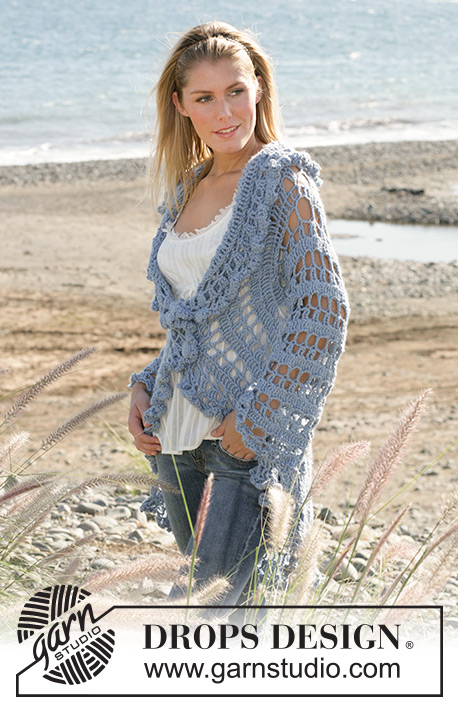 |
DROPS circle jacket crochet with 2 strands “Alpaca”. Sizes S-XL
DROPS 99-3 |
|
|
Crochet the jacket according to the explanations for the circle. Start to cast off for the armholes on the 12-13-14 round. Crochet 2 rounds according to the explanation for cast off for armholes, then continue to crochet according to explanation for the circle. Crochet tension: 3 rows in the circle using hook size 6 mm and 2 strands Alpaca measures 6.5 cm. After 5th round the circle measures 20 cm in diameter. Crochet info: Substitute the first dtr each round with 4 ch. Finish each round with a sl st at beg of round. Measurement tips: Because of the weight of the yarn, all measurements should be made whilst the garment is hanging, otherwise the sleeves will be too long when wearing the jacket. ------------------------------------------------------- CIRCLE: Crochet 4 ch with 2 strands Alpaca and make a ring with a sl st in the first ch. 1st round: Crochet 8 dc around the ring 2nd round: Read crochet info! Crochet 3 dtr in each dc. Finish with a sl st at beg. of round = 24 dtr 3rd round: Crochet 1 dtr, *3 ch, skip 1 dtr, 1 dtr in the next dtr*, repeat from *-* and finish with 3 ch and 1 sl st at the beg. of round = 12 dtr. 4th round: Crochet 3 dtr in the first dtr *3 ch, skip 3 ch, 3 dtr in the next dtr*, repeat from *-* and finish with 3 ch, skip 1 dtr and 1 sl st at beg. of round = 36 dtr. 5th round: Crochet 1 dtr in each dtr and 3 dtr in each ch-loop = 72 dtr. The circle now measures approx. 20 cm in diameter. 6th. round: Crochet 1 dtr in the first dtr, *3 ch, skip 1 dtr, 1 dtr in the next dtr*, repeat from *-* and finish with 3 ch, skip 1 dtr and a sl st at beg. of round = 36 dtr 7th. round: Crochet 3 dtr in the first dtr,* 2 ch, skip 3 ch, 3 dtr in the next dtr*, repeat from *-* and finish with 2 ch, skip 3 ch and a sl st at beg. of round = 108 dtr. 8th round: Crochet 1 dtr in each dtr and 1 dtr in each ch-loop = 144 dtr. 9th round: Crochet 1 dtr in the first dtr, *3 ch, skip 2 dtr, 1 dtr in the next dtr*, repeat from *-* and finish with 3 ch, skip 2 dtr and a sl st at beg. of round = 48 dtr 10th round: Crochet 3 dtr in the first dtr *1 ch, 3 dtr in the next dtr*, repeat from *-* and finish with 1 ch and a sl st at beg. of round = 144 dtr. 11th round: Crochet 1 dtr in each dtr and 1 dtr in each ch-loop = 192 dtr. Remember to cast off for armholes for size S/M – read cast off explanation for round 12 and 13 below! 12th round: *1 dtr, 3 ch, skip 2 dtr*, repeat from *-* until finish round = 64 dtr. Remember to cast off for armholes for size M/L – read cast off explanation for round 13 and 14 below! 13th round: 3 dtr in the first dtr, *2 ch, 3 dtr in the next dtr*, repeat from *-* = 192 dtr. Remember to cast off for armholes for size XL – read cast off explanation for round 14 and 15 below! 14th round: 1 dtr in each dtr, 1 dtr in each ch-loop = 256 dtr. 15th round: 1 dtr in the first dtr, *3 ch, skip 2 dtr, 1 dtr in the next dtr*, repeat from *-* until finish round = 86 dtr. 16th round: 3 dtr in the first dtr, *2 ch, 2 dtr in the next dtr, 2 ch, 3 dtr in the next dtr*, repeat from *-* until finish round = 215 dtr. Repeat round 14, 15 and 16 with inc. until the circle measures 100-110-120 cm in diameter. CAST OFF for armholes as follows: Size S/M: Crochet armholes according to round 12 below. 12th round: Crochet 1 dtr, 26 ch, skip over 26 dtr, *1 dtr, 3 ch, skip over 2 dtr*, repeat from *-* a total of 14 times, 1 dtr, 26 ch, skip 26 dtr, *1 dtr, 3 ch, skip 2 dtr*, repeat from *-* until finish round = 48 dtr. 13th round: Crochet as follows over the 26 ch’s: *3 dtr, 2 ch*, a total of 8 times. Over the dtr crochet as follows: *3 dtr in each dtr, 2 ch*, repeat from *-* = 192 dtr. Continue on round 14 as explained above. Size M/L: Crochet arm holes according to round 13 below. 13th round: 3 dtr in the first dtr, 30 ch, skip over (1 dtr and 3 ch) a total of 7 times, 3 dtr in the following dtr, *2 ch, 3 dtr in the next dtr*, repeat from *-* a total of 15 times, 30 ch, skip over (1 dtr and 3 ch) a total of 7 times, *2 ch, 3 dtr in the next dtr*, repeat from *-* until finish round = 150 dtr. 14th. round: Crochet as follows over the 30 ch’s: 28 dtr. Over the dtr and the ch-loops crochet as follows: 1 dtr in each dtr, 1 dtr in each ch-loop = 256 dtr. Continue on round 15 as explained above. Size XL: Crochet the armholes according to round 14 below: 14th round: 34 ch, skip over (3 dtr and 2 ch) a total of 8 times, *1 dtr in each of the next 3 dtr, 1 dtr in the next ch-loop*, repeat from *-* a total of 16 times, 34 ch, skip over (3 dtr and 2 ch) a total of 8 times *1 dtr in each of the next dtr, 1 dtr in the next ch-loop*, repeat from *-* until finish round = 192 dtr. 15th round: Crochet as follows over the 34 ch: *1 dtr, 3 ch*, repeat from *-* a total of 11 times. Over dtr crochet as follows: 1 dtr, *3 ch, skip over 2 dtr, 1 dtr in the next dtr*, finish with a dtr in the last dtr = 86 dtr. Continue on round 16 as explained above. SLEEVES: Crochet the sleeves from the armholes and down with 2 strands Alpaca. Crochet around. Remember the crochet info! 1st round: Crochet 52-60-68 dtr around the armhole from the circle and finish with a sl st in the first dtr from beg. of round. 2nd round: Crochet 1 dtr in the first dtr, *3 ch, skip over 3 dtr, 1 dtr in the next dtr*, repeat from *-* and finish with: Skip over 3 ch and 1 sl st in the first dtr = 13-15-17 dtr. 3rd round: Crochet 2 dtr in the first dtr, *1 ch, skip over 3 ch, 2 dtr in the next dtr*, repeat from *-* and finish with: 1 ch and 1 sl st in beg. of round = 26-30-34 dtr. 4th round: Crochet 1 dtr in each dtr and 2 dtr around each ch = 52-60-68 dtr. Repeat 2nd, 3rd and 4th round until the sleeve measures 52-54-56 cm from the armhole – read measurement tips. Cut and sew the thread. Crochet edge: Crochet an edge around the circle and at the bottom of the sleeves with 2 strands Alpaca as follows: 1st. round: 1 dtr in the first dtr, *2 ch, skip 1.5 - 2 cm, 1 dtr in the next stitch*, repeat from *-* and finish with 2 ch and a sl st in the first dtr. 2nd. round: 2 dtr in the first dtr, *4 ch, 2 dtr in the same dtr, 1 ch, 2 dtr in the next dtr* and finish with 4 ch, 2 dtr in the same dtr, 1 ch and 1 sl st in the first dtr. Cut and sew the thread. Button cover: Crochet 2 ch with 2 strands Alpaca and then crochet 6 dc in the first of the 2 ch and finish round with a sl st in the first dc (= 1st round). 2nd round: 1 ch, crochet 2 dc in each dc and finish with a sl st at beg. of round (= 12 dc) 3rd + 4th round: 1 ch, 1 dc in each dc and finish with a sl st at beg. of round (= 12 dc). 5th. round: 1 ch, crochet 1 dc in every other dc and finish with a sl st at beg. of round (= 6 dc). Put the button inside the cover, sew around and pull tight. Try on the jacket and place the buttons in the waist on the left side of the jacket in the penultimate round. |
|
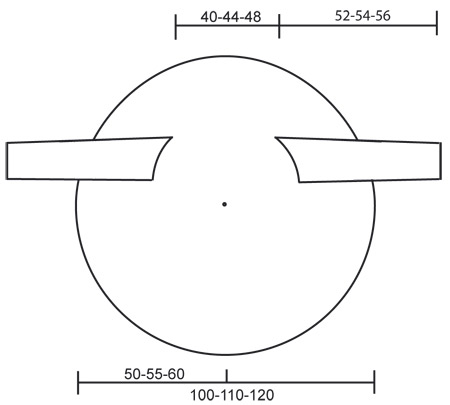 |
|
Have you finished this pattern?Tag your pictures with #dropspattern #moonlightmistjacket or submit them to the #dropsfan gallery. Do you need help with this pattern?You'll find 7 tutorial videos, a Comments/Questions area and more by visiting the pattern on garnstudio.com. © 1982-2025 DROPS Design A/S. We reserve all rights. This document, including all its sub-sections, has copyrights. Read more about what you can do with our patterns at the bottom of each pattern on our site. |
|








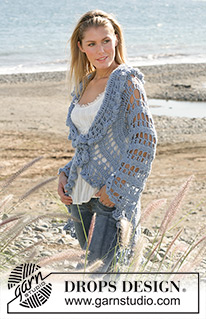

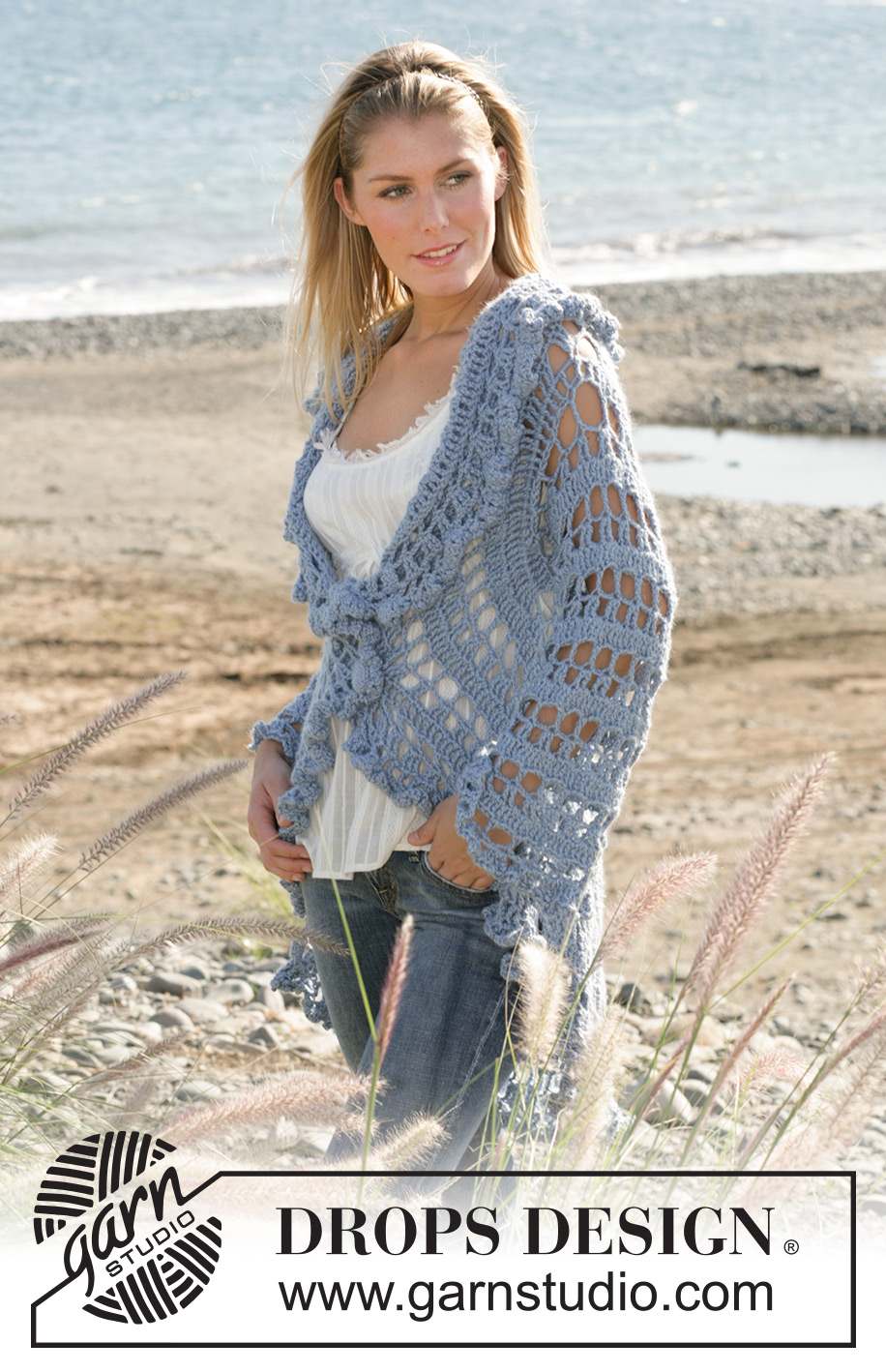






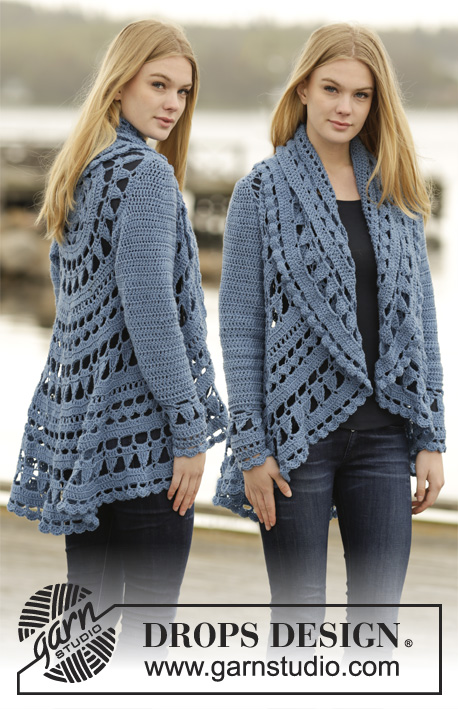













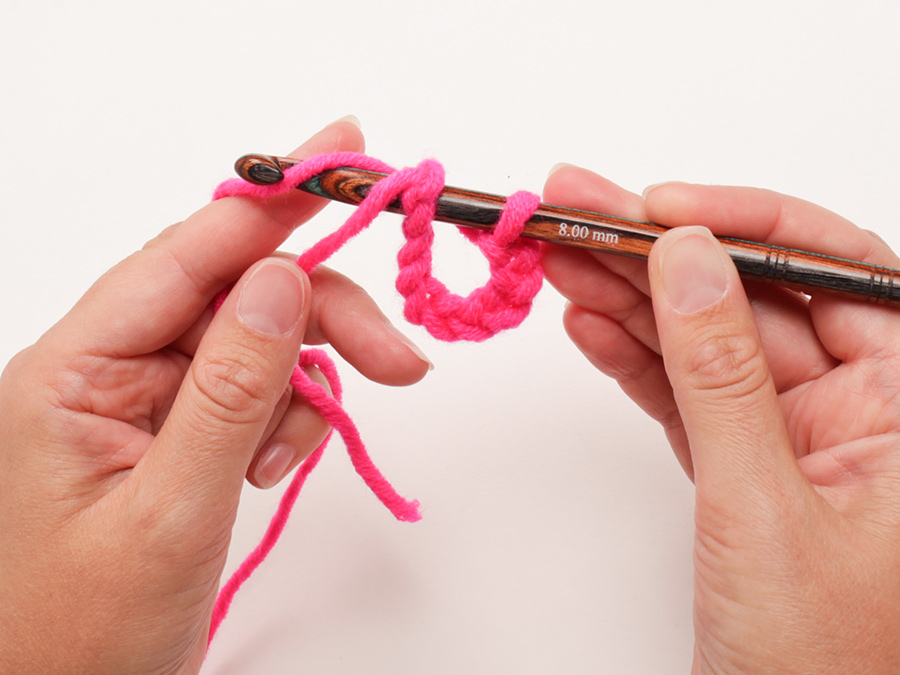



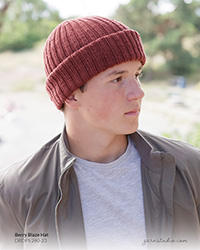
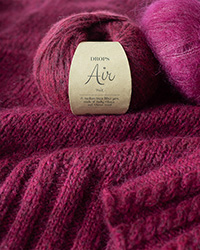
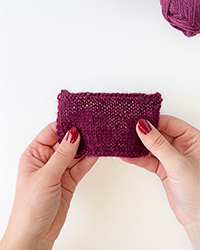

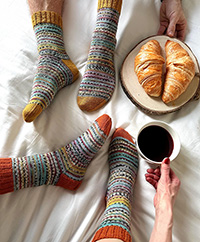
Post a comment to pattern DROPS 99-3
We would love to hear what you have to say about this pattern!
If you want to leave a question, please make sure you select the correct category in the form below, to speed up the answering process. Required fields are marked *.